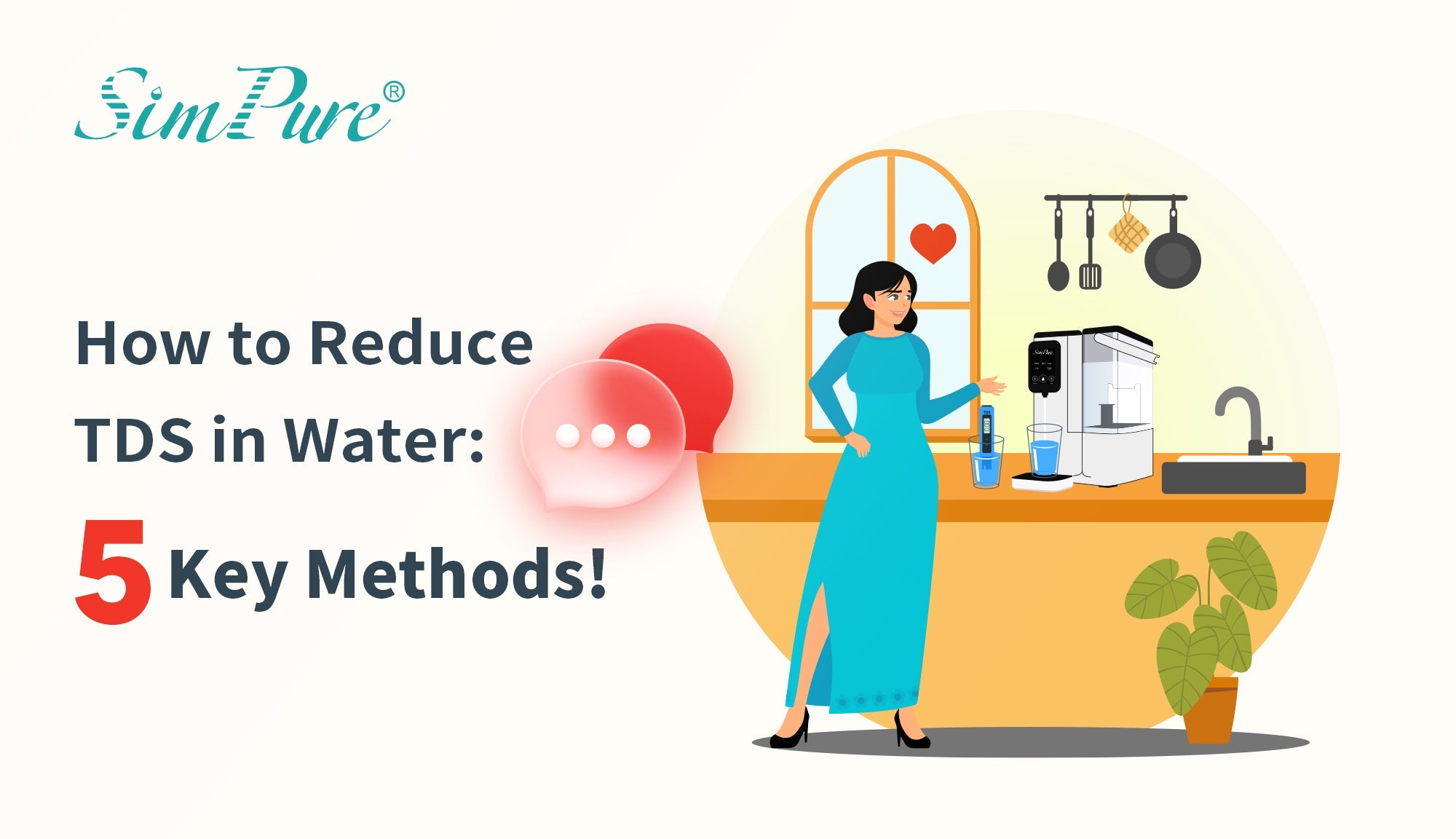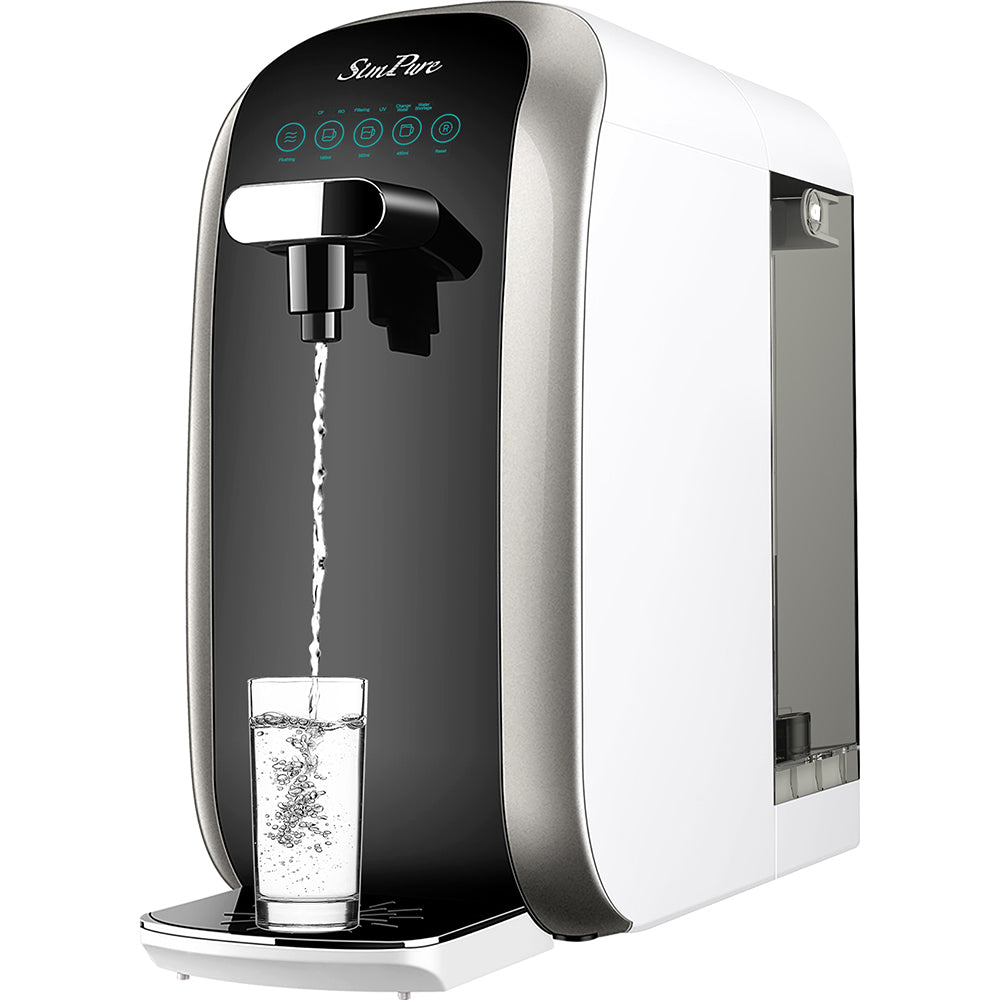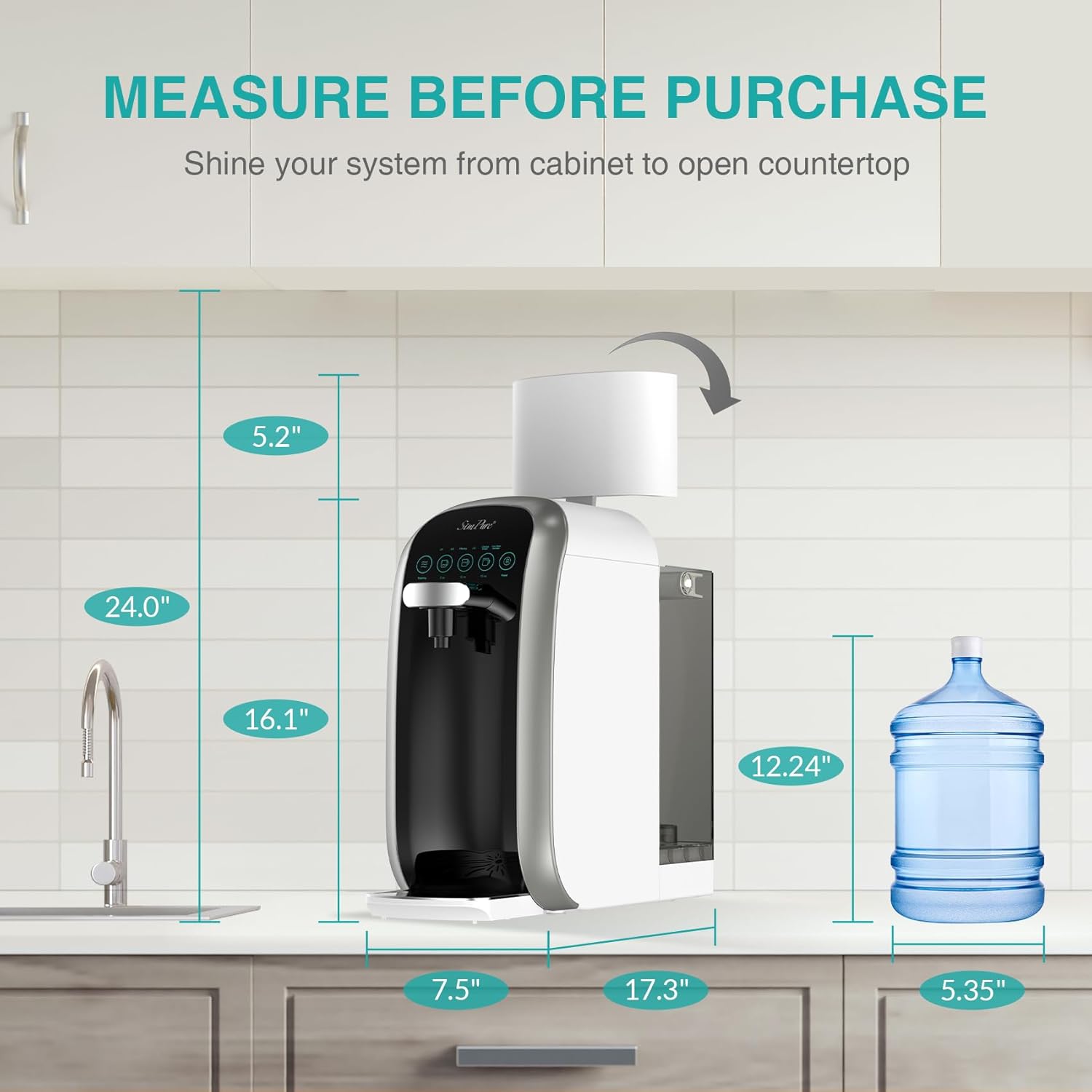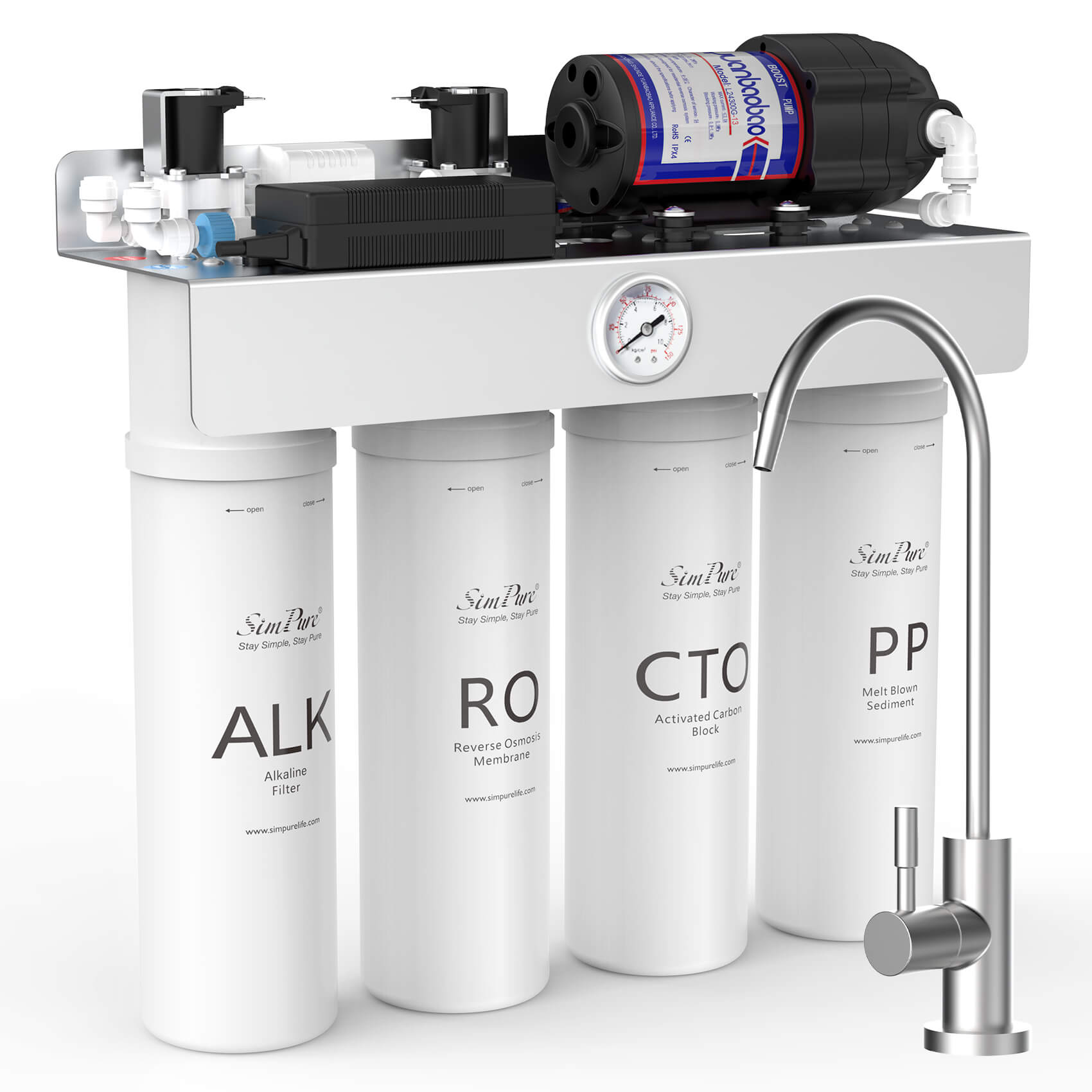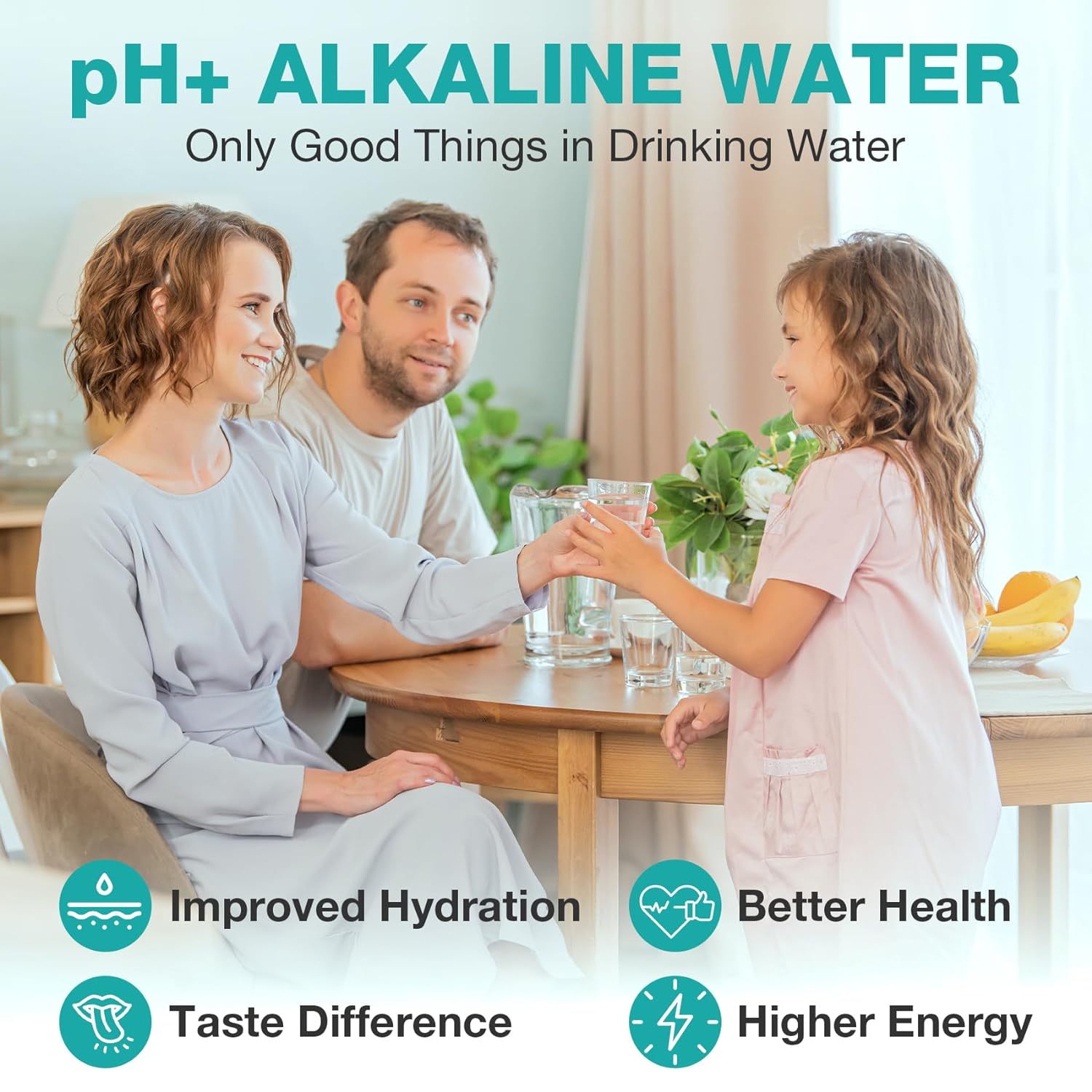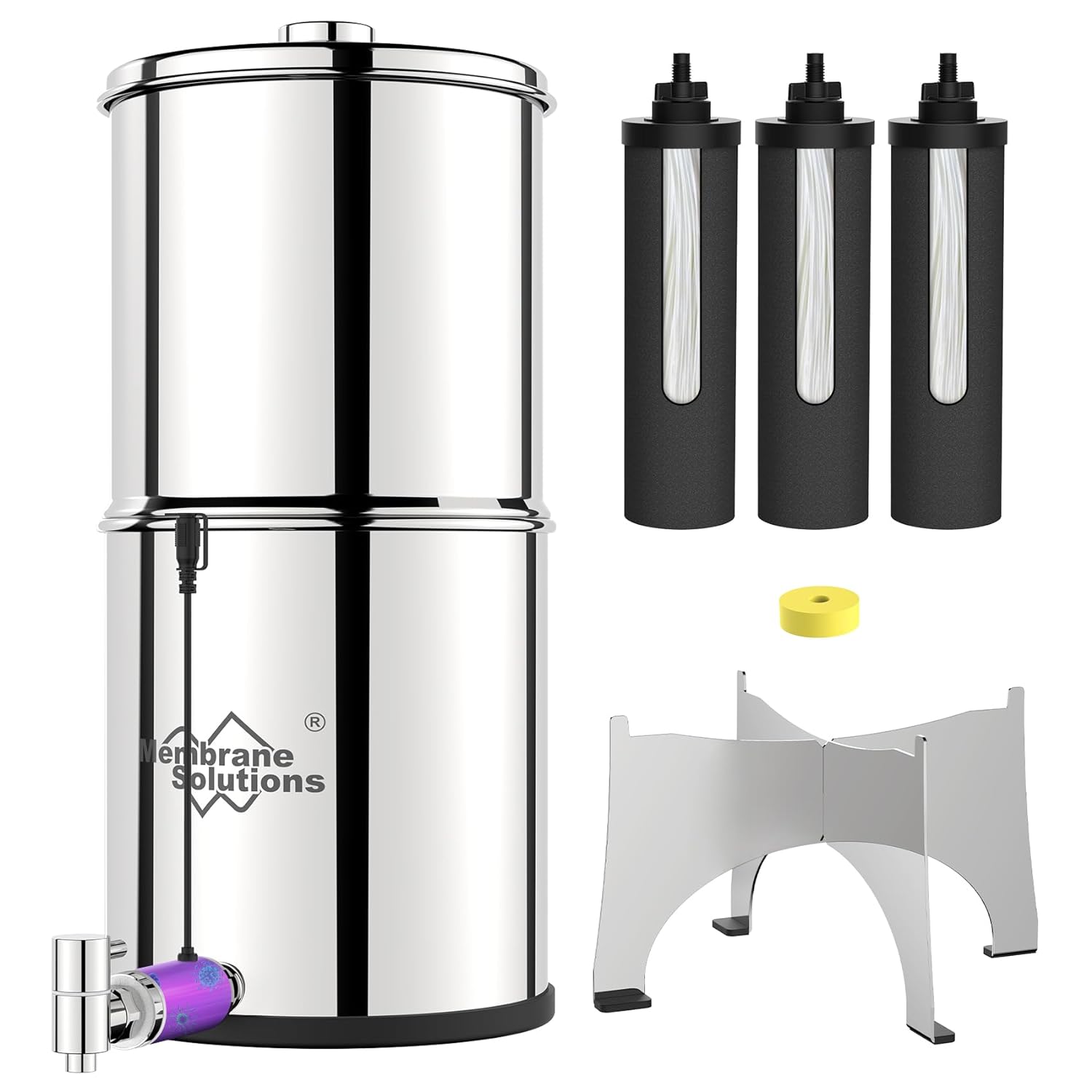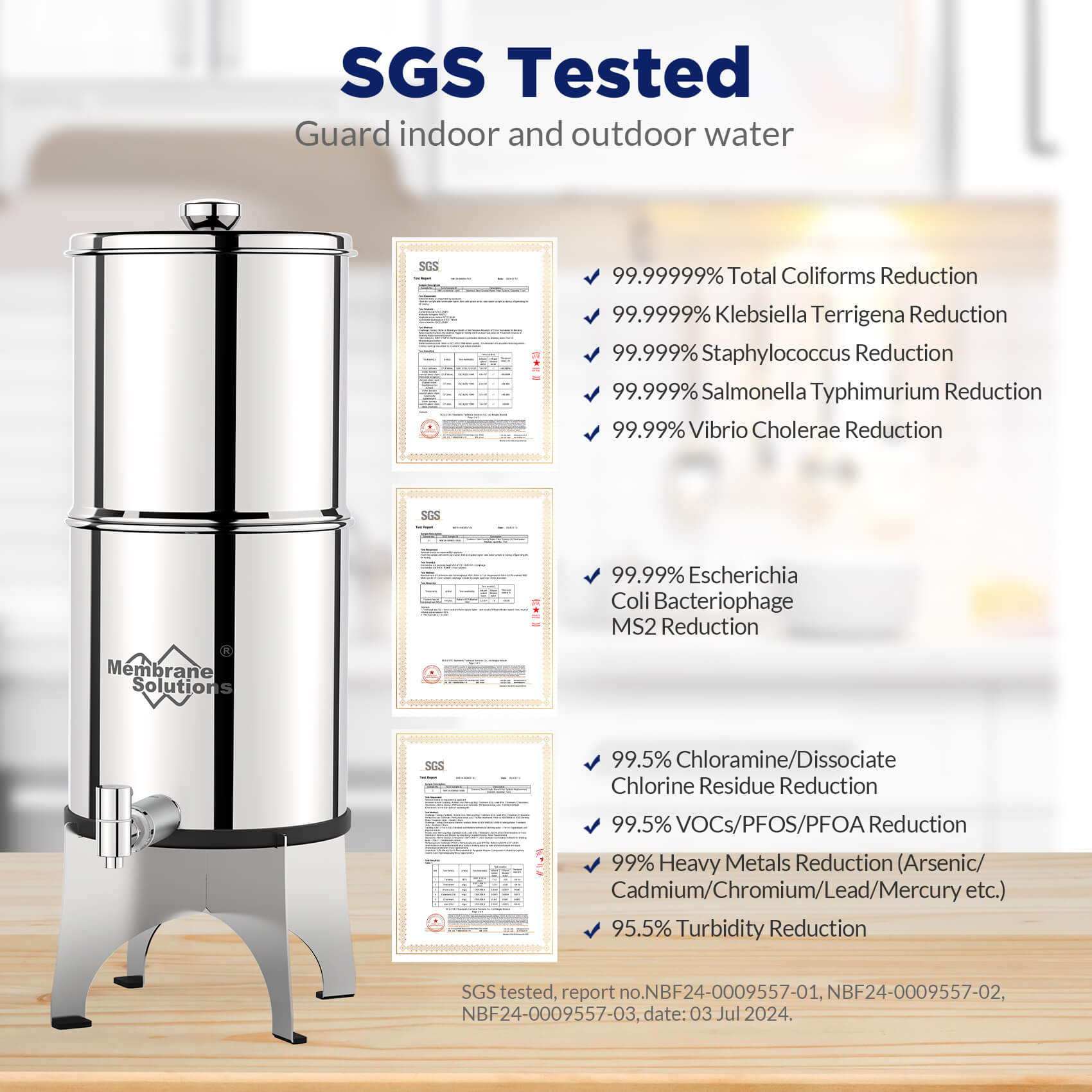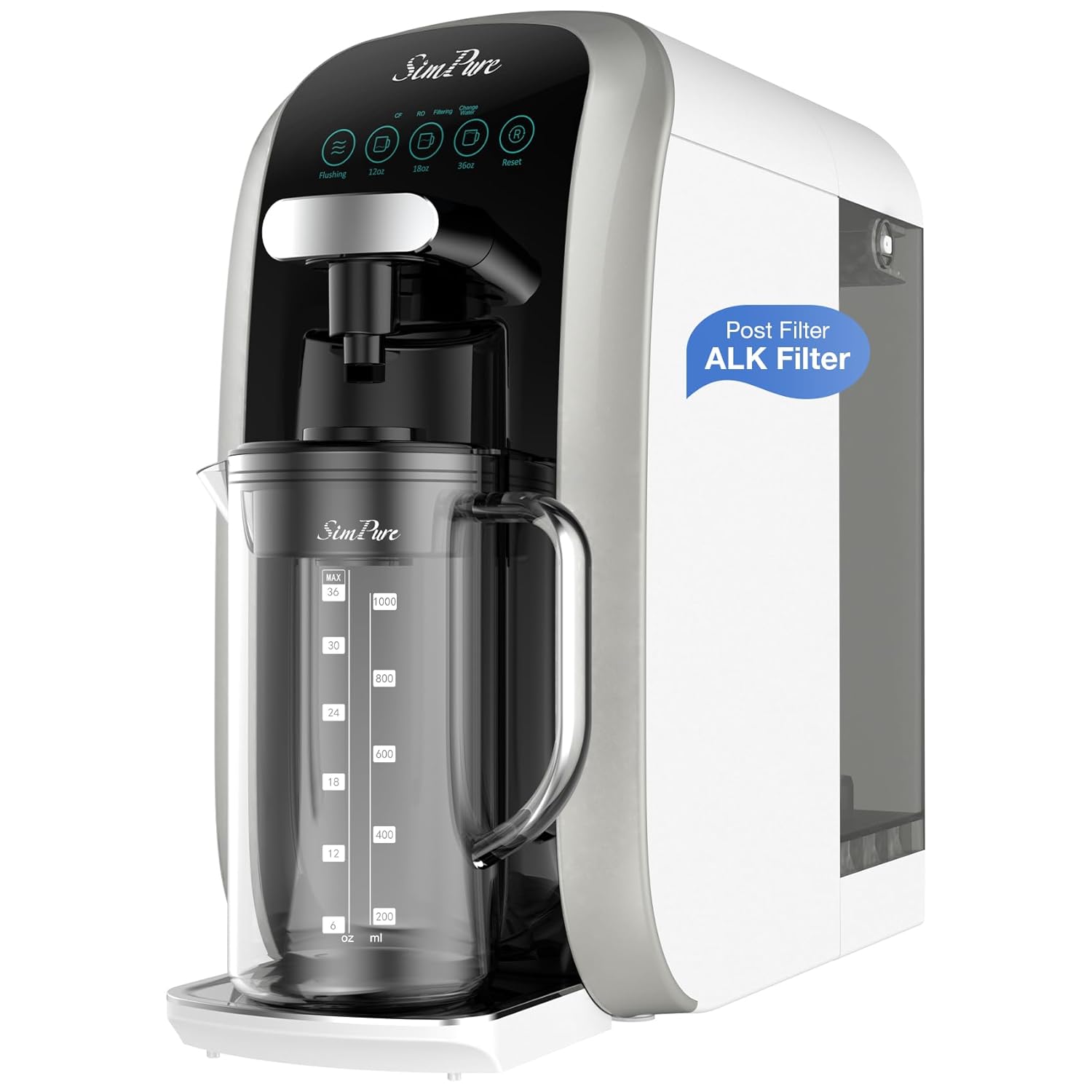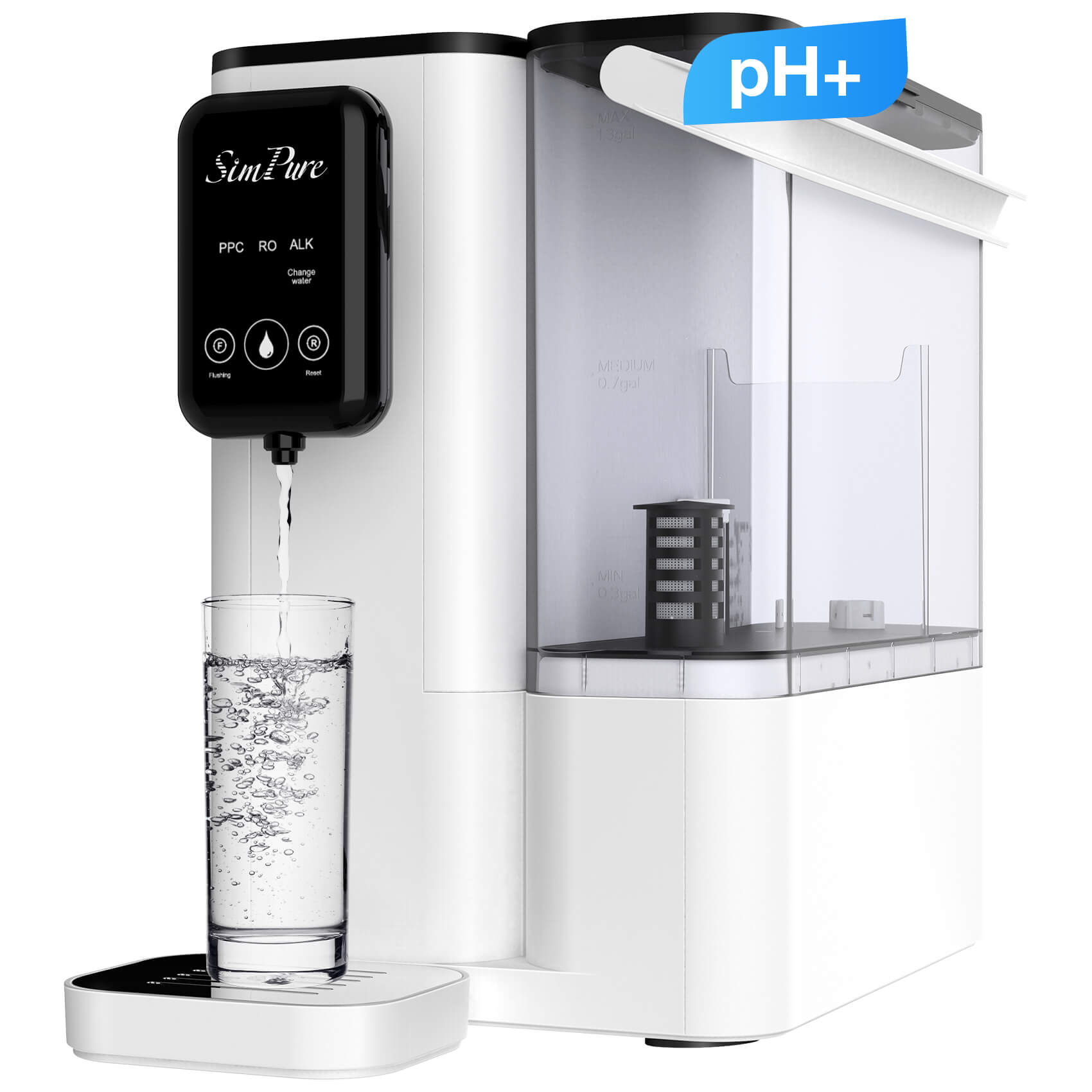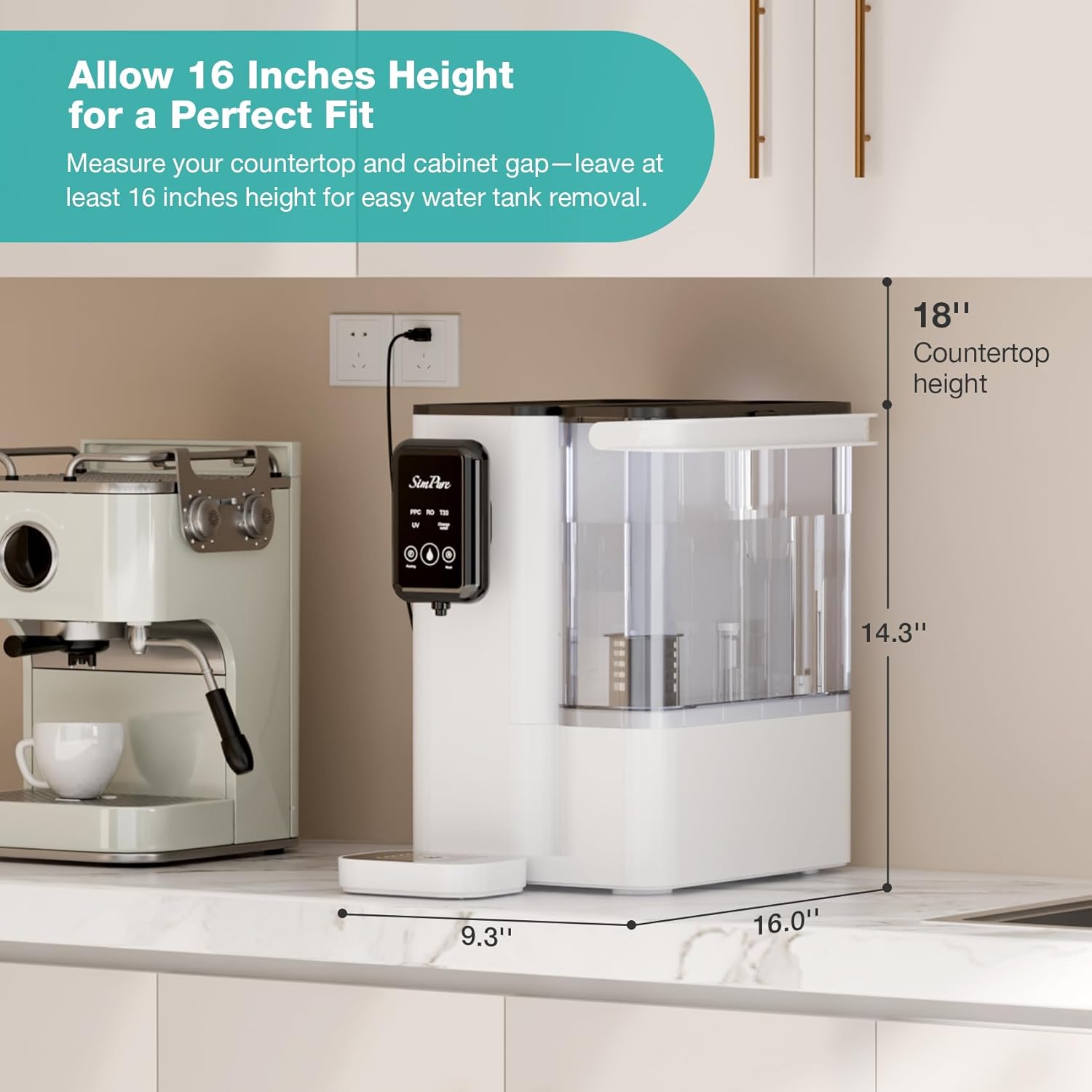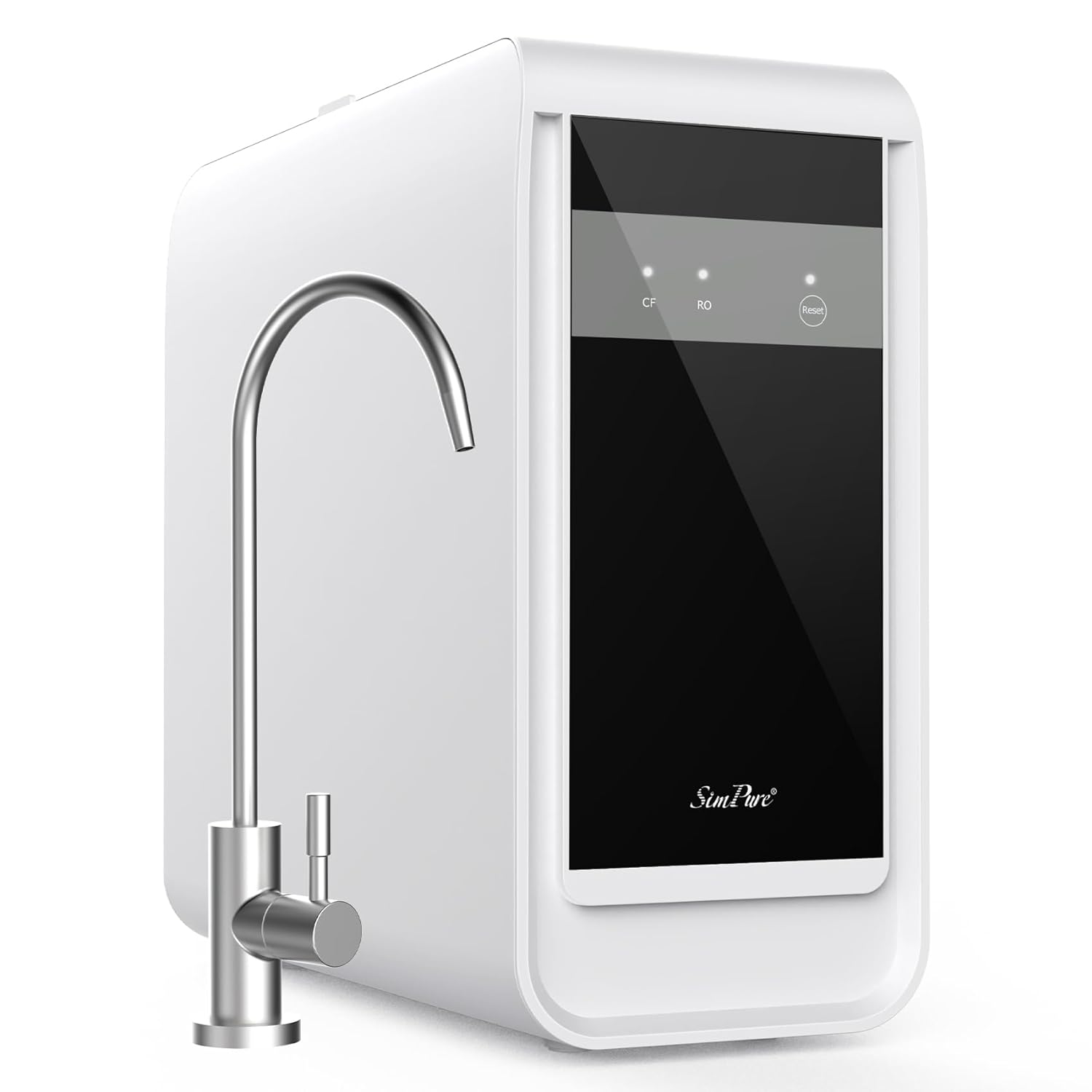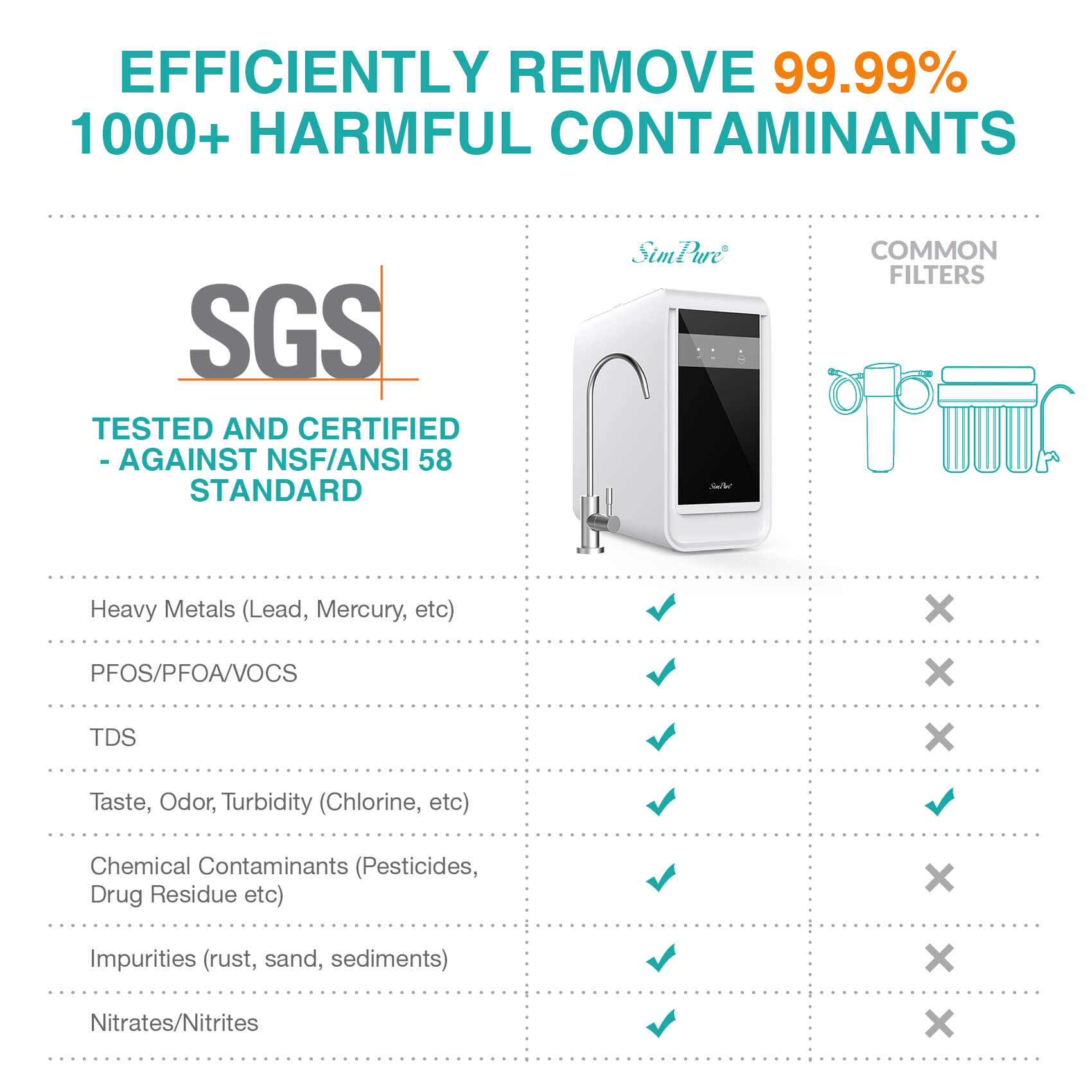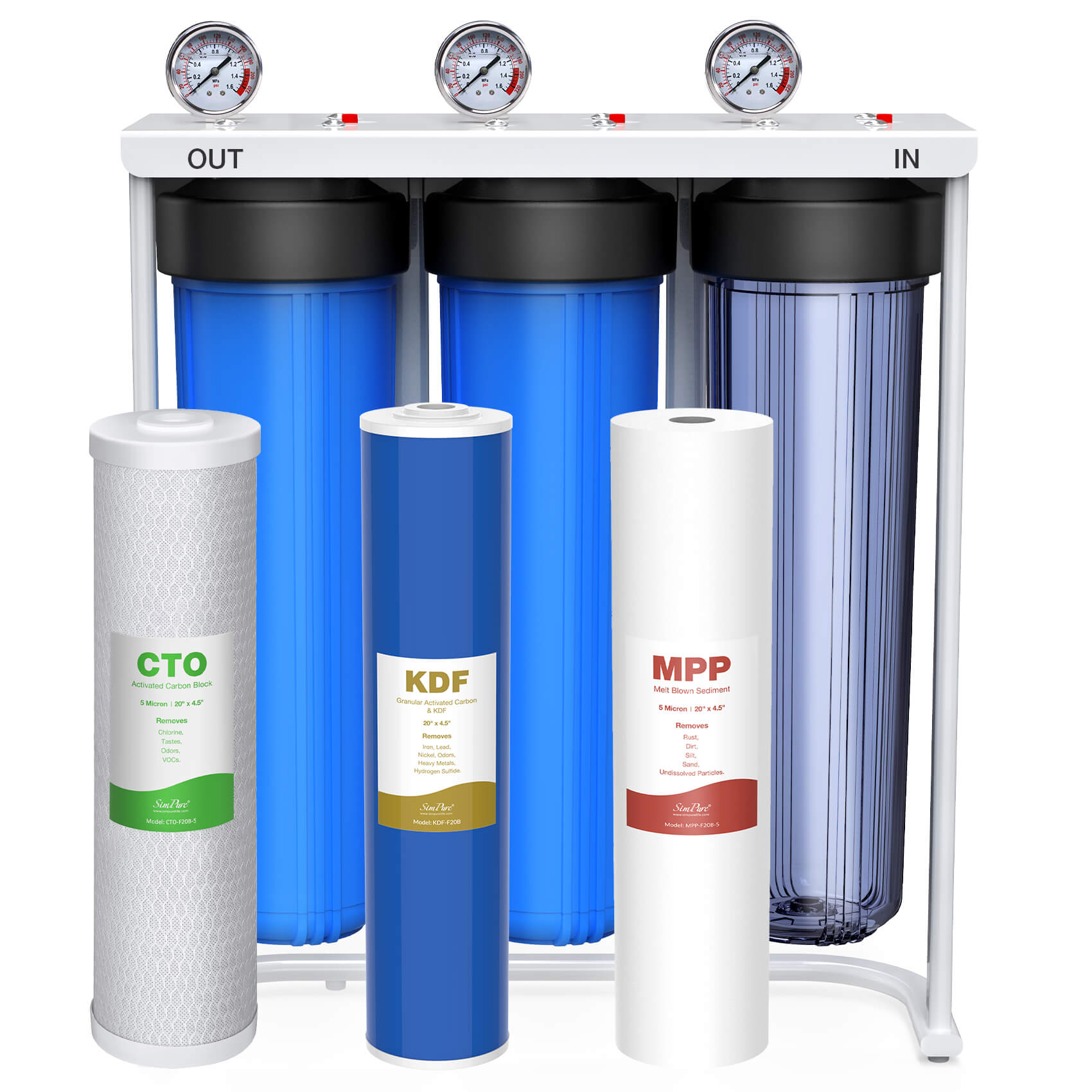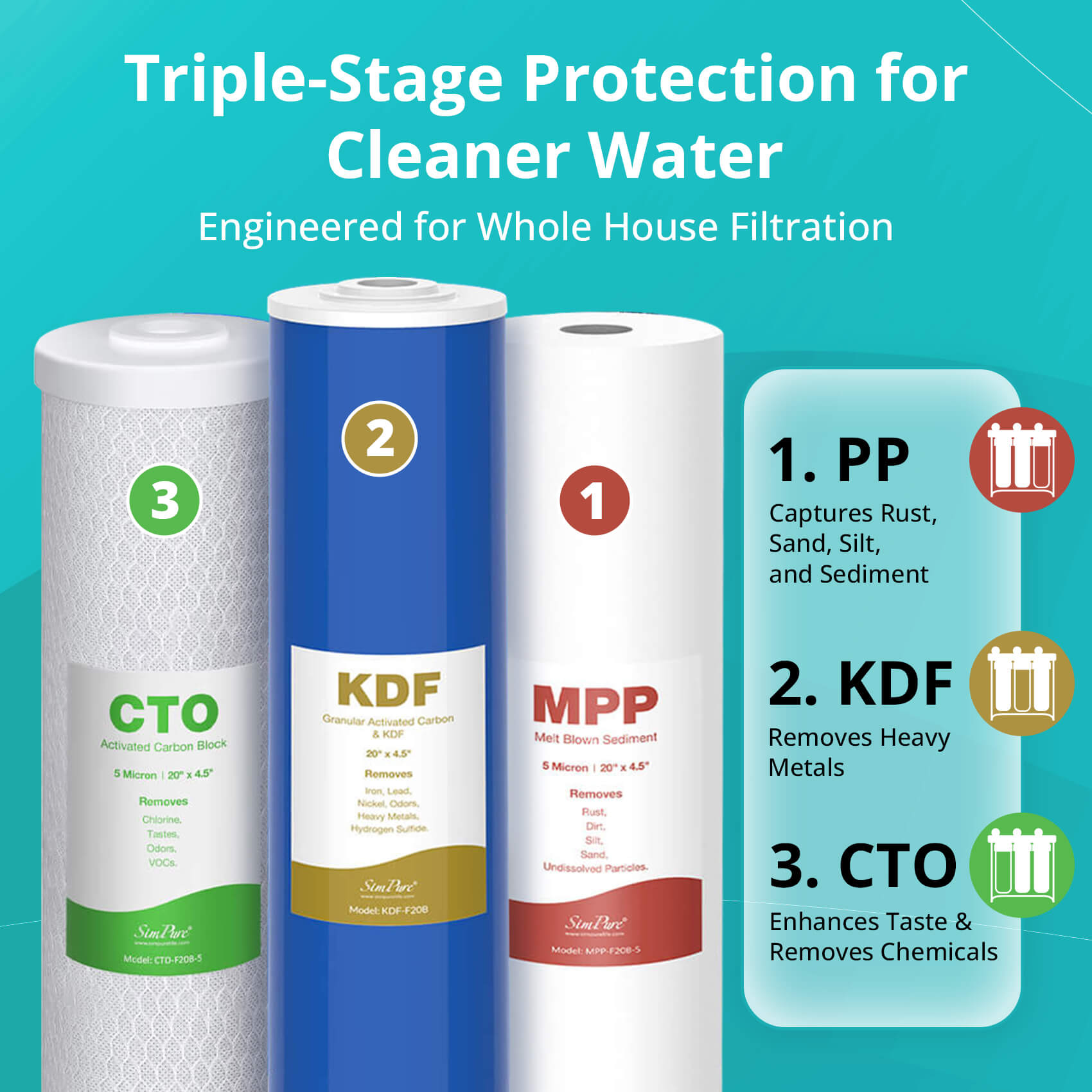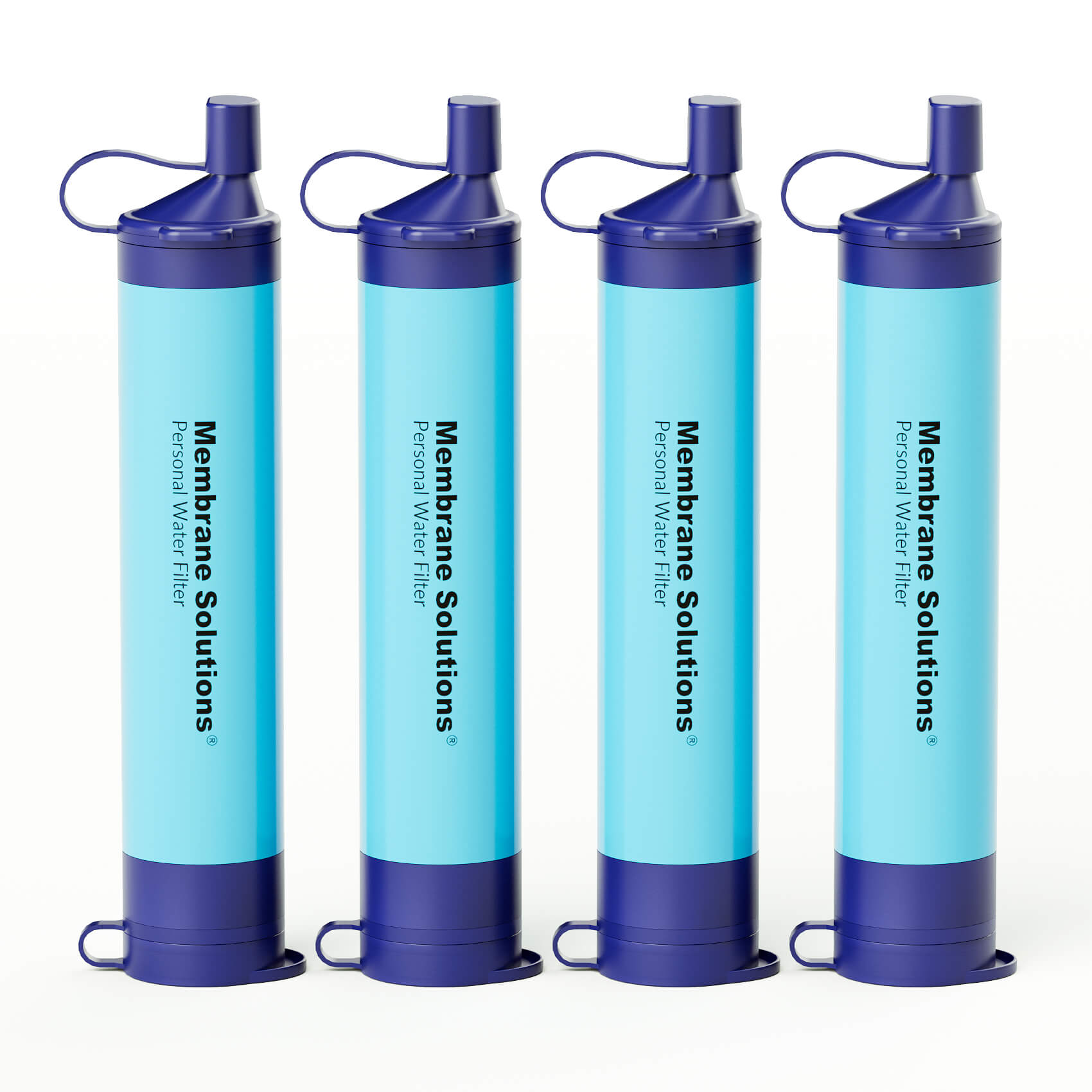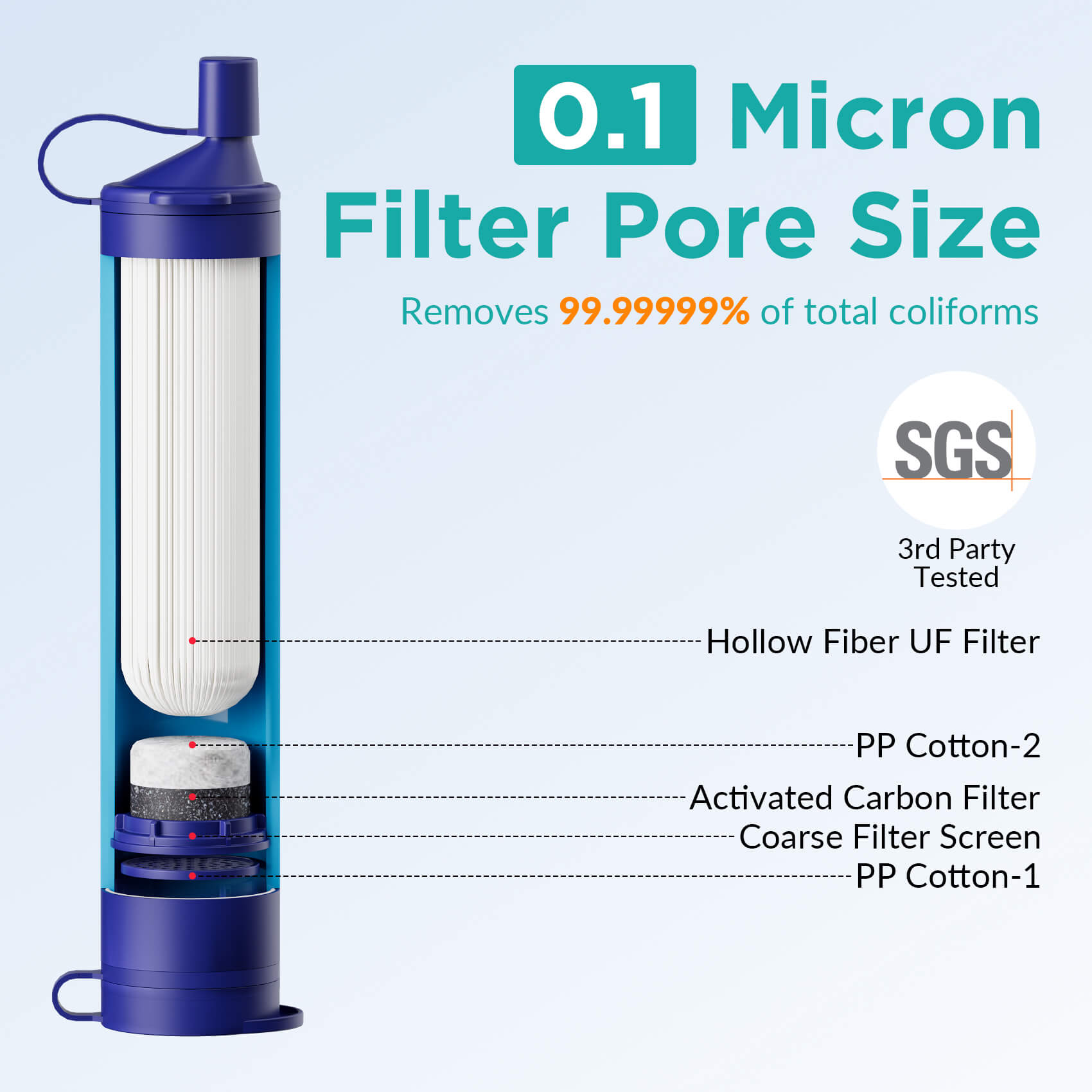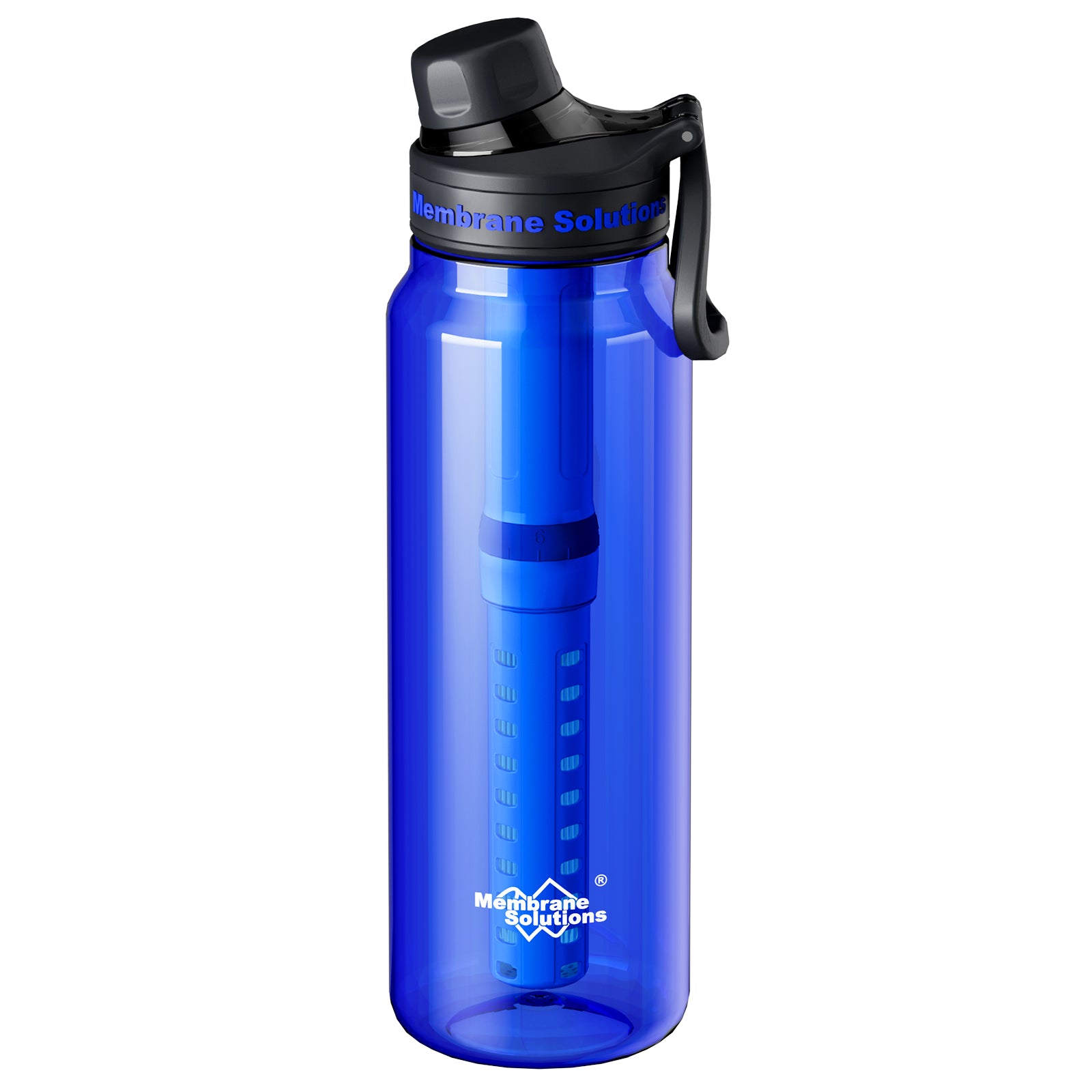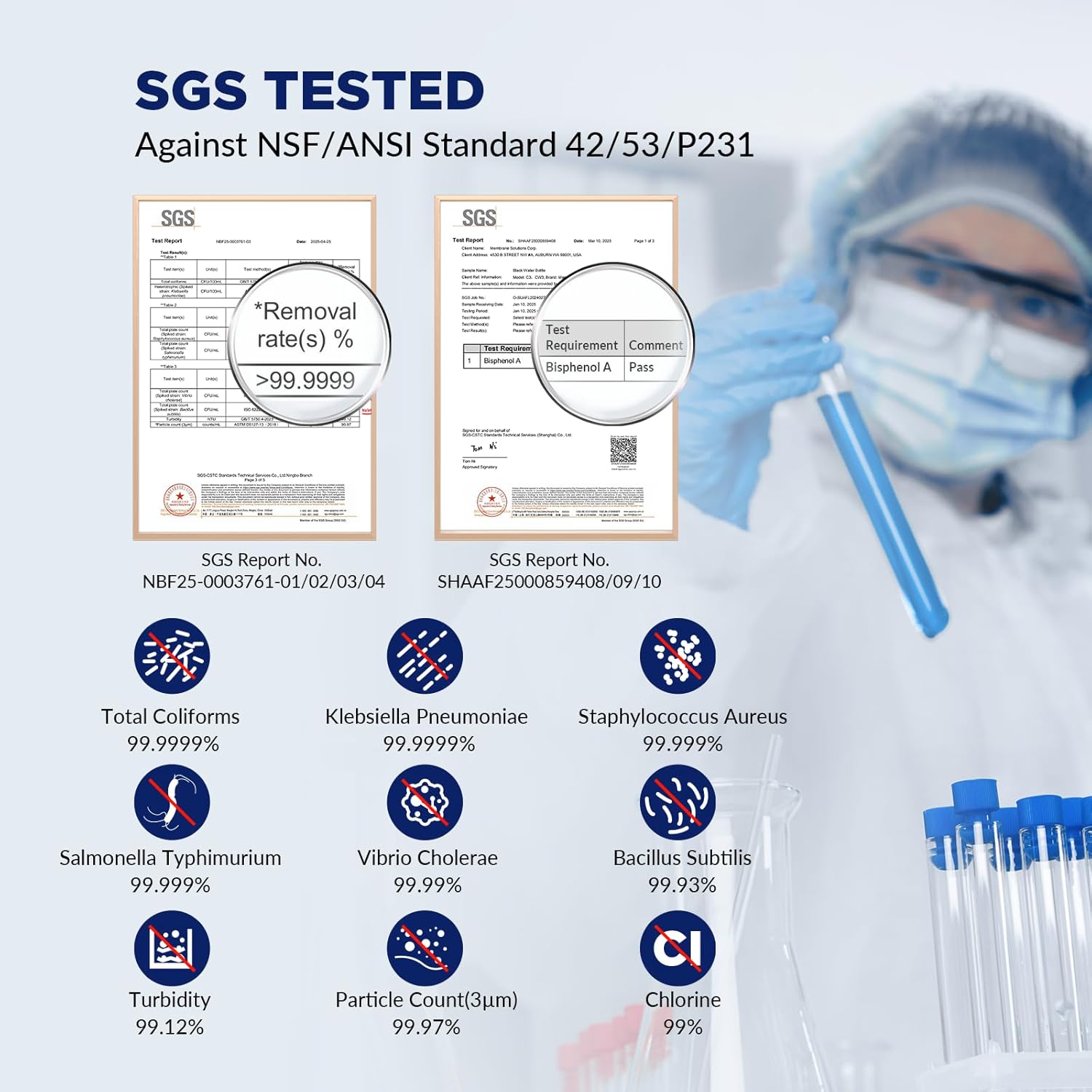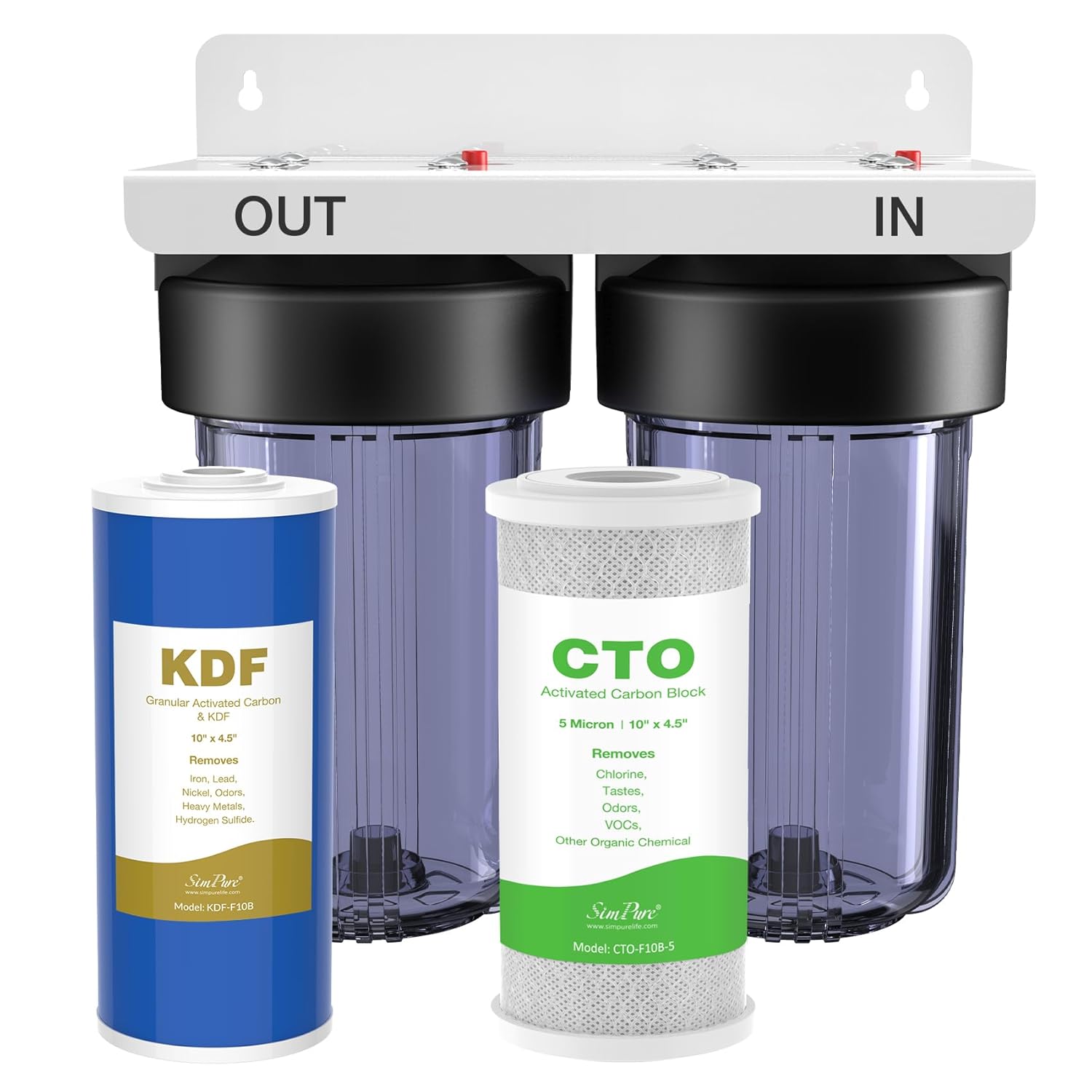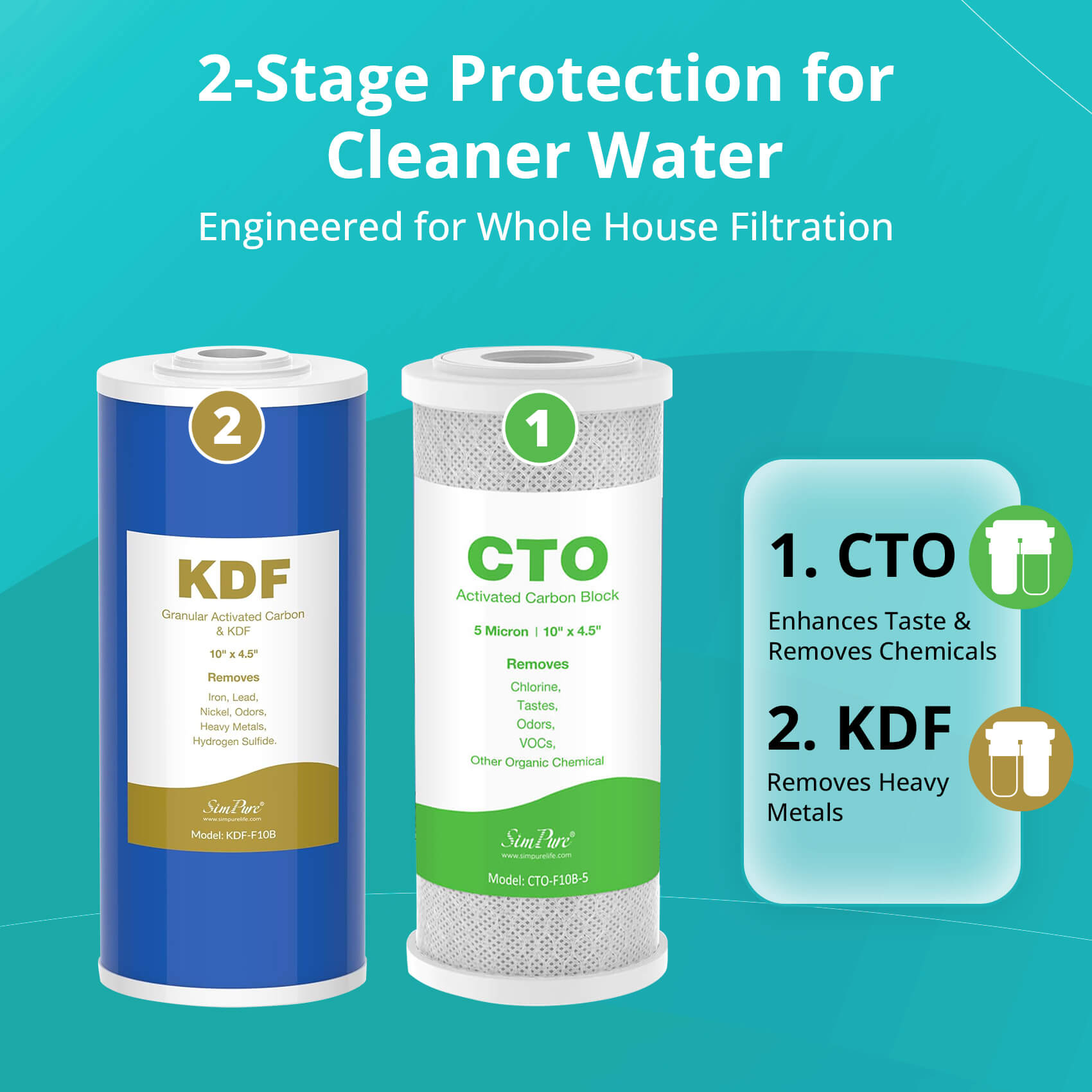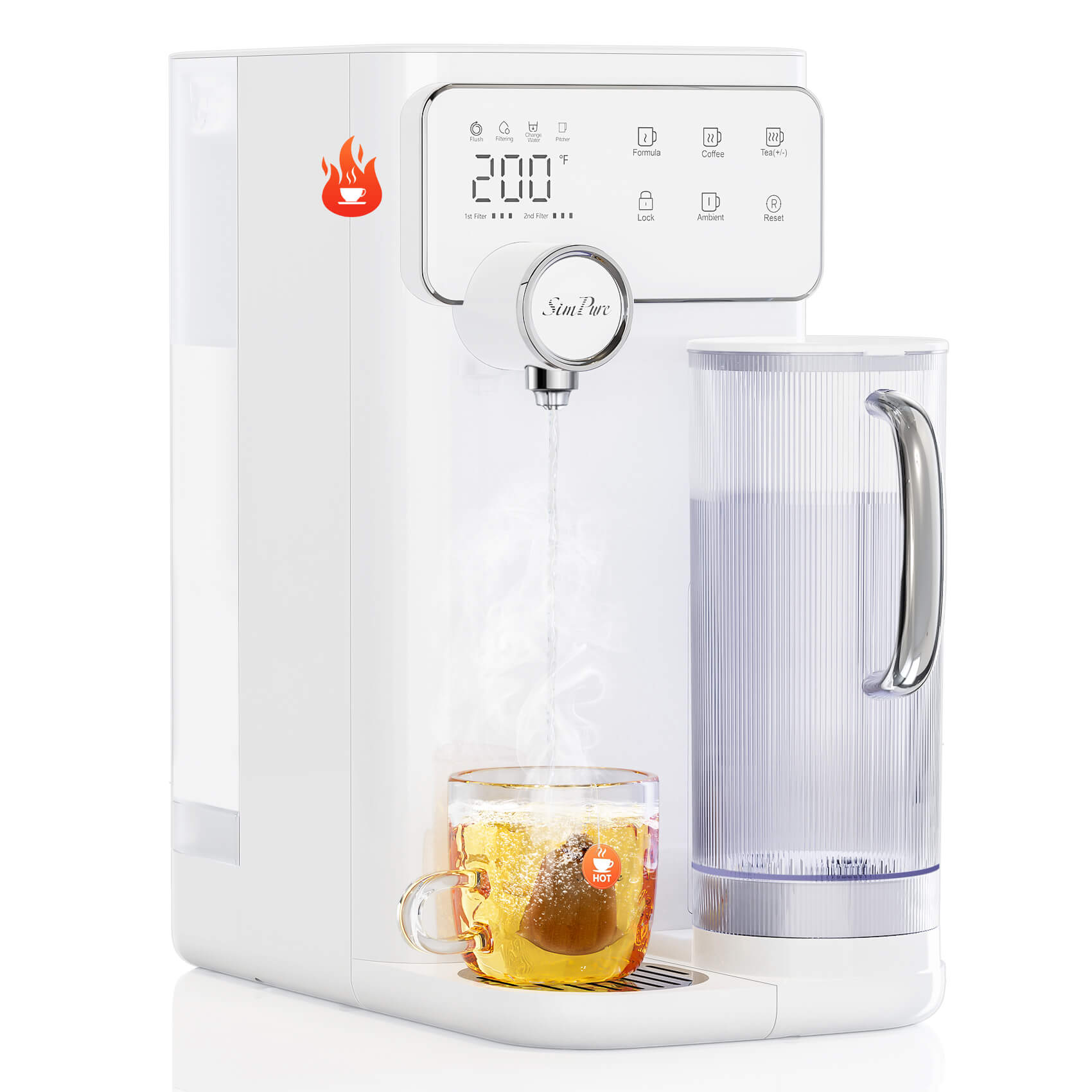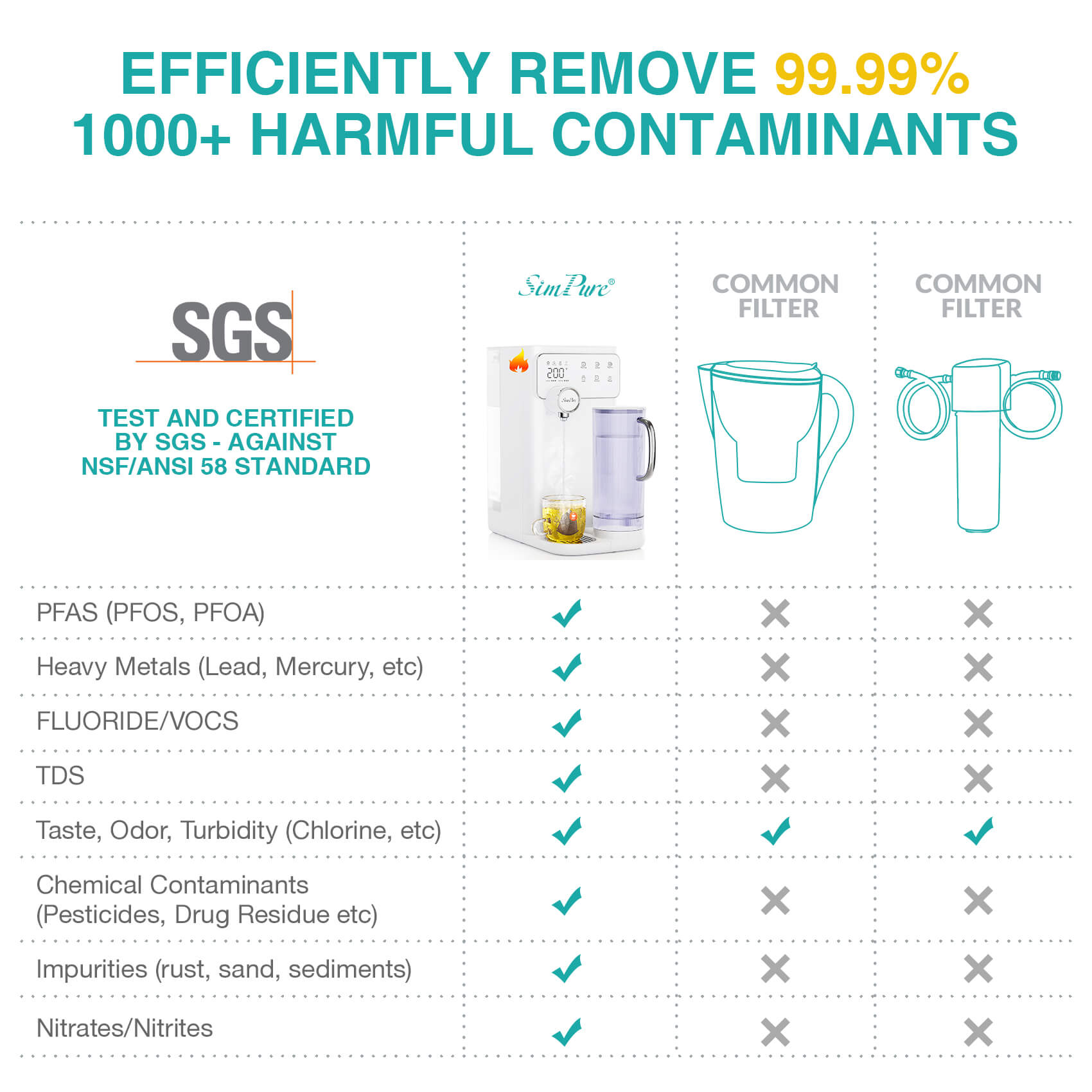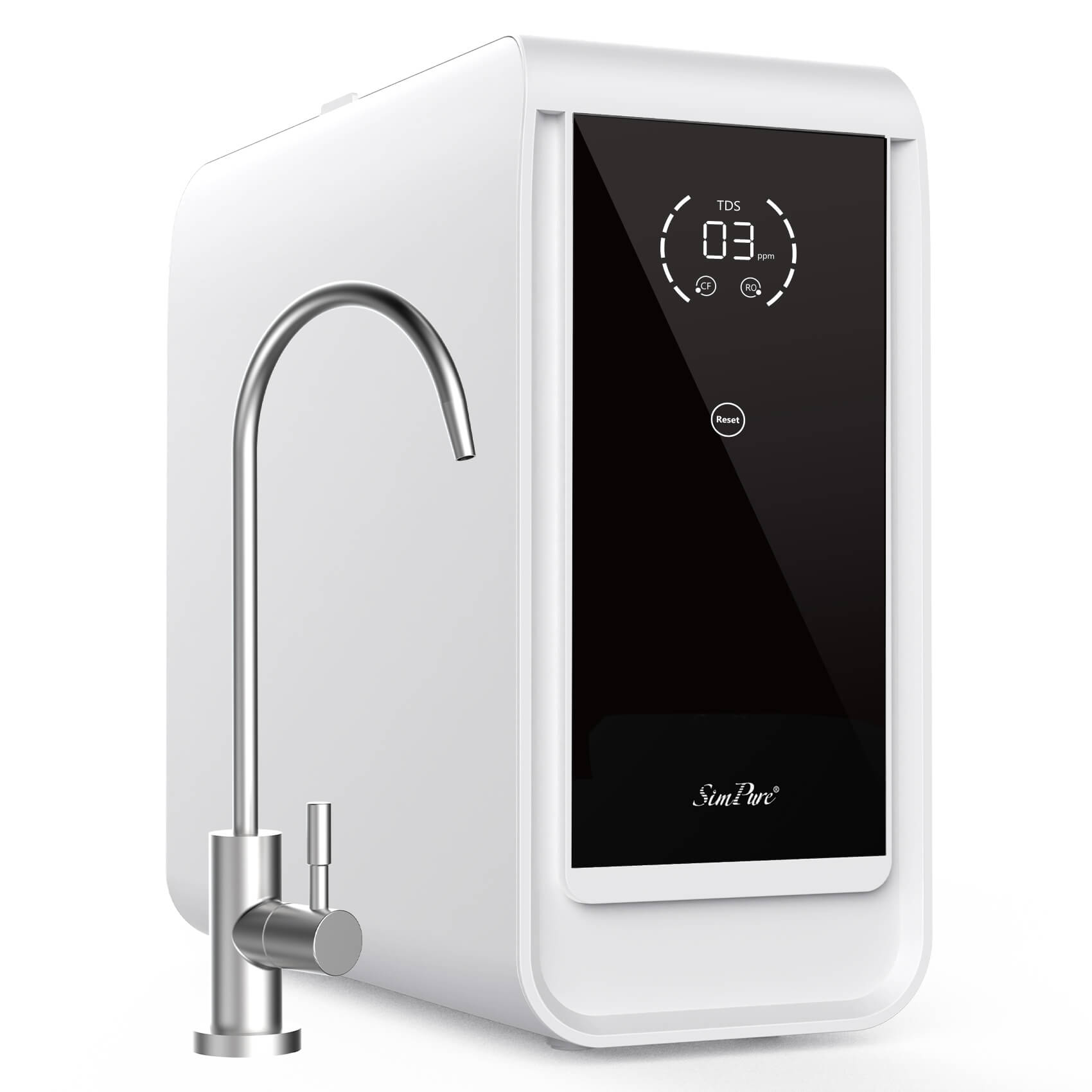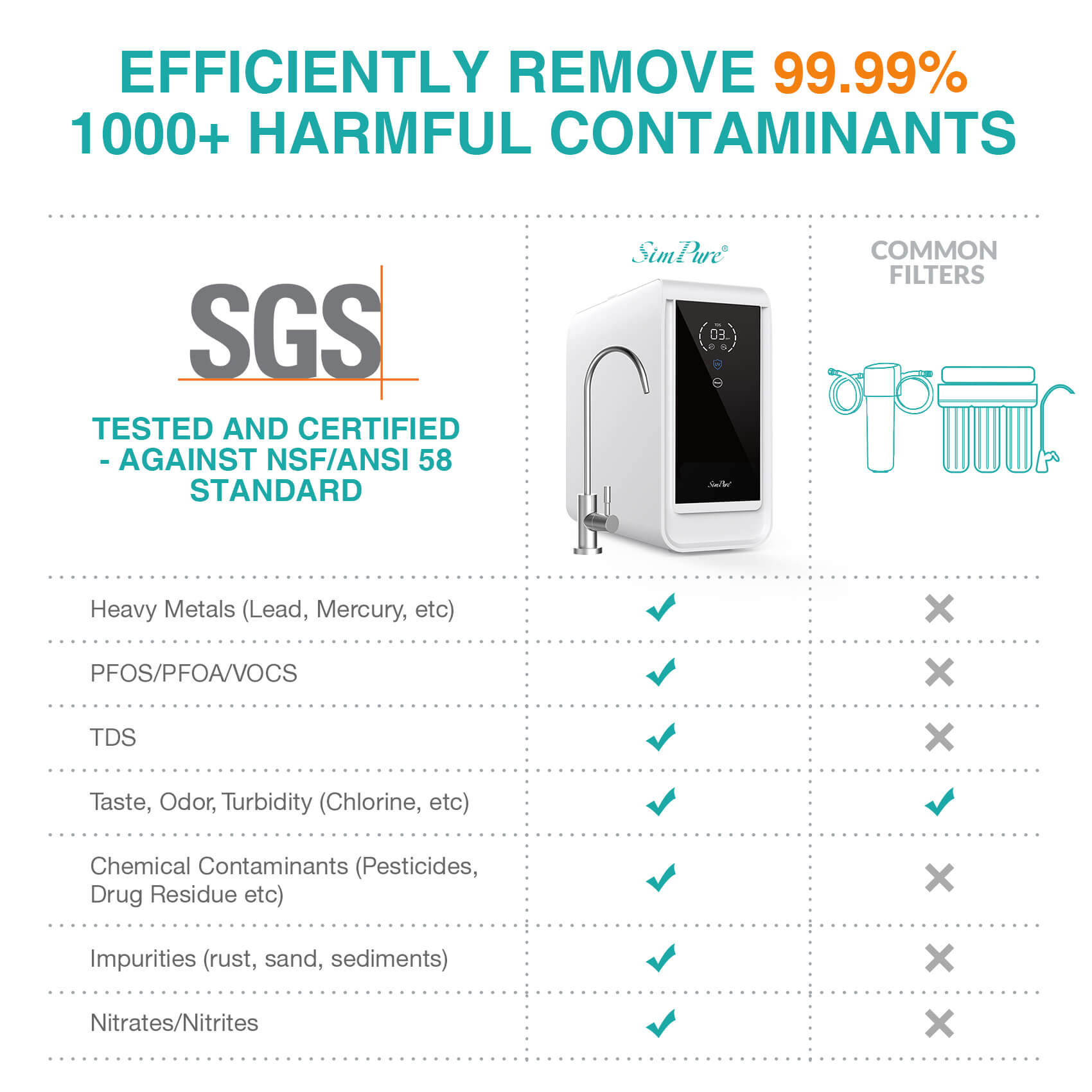Total Dissolved Solids (TDS) in water can be a major concern, particularly in regions where the water supply is sourced from underground wells. While these substances are not necessarily harmful to human health, high levels of TDS can result in an unpleasant taste, discoloration, and a buildup of mineral deposits in pipes and appliances. So, how to reduce TDS in water at home? In this article, let's see what are the harmful effects of excess TDS in drinking water and effective ways of reducing total dissolved solids in water.
Harmful Effects of High TDS Level in Drinking Water

Before we know how to reduce TDS in water, let's take a look at the harmful effects of excessive TDS in drinking water. A high TDS value in the water supply means a higher concentration of natural minerals (such as calcium and magnesium), dissolved salts, ions, organic matter, etc. While mineral water with a certain TDS level is helpful and essential for drinking, water with a high TDS value can become harmful. Let's see the detailed harmful effects of excessive TDS in water:
1. Taste and smell: High TDS in drinking water may have an unpleasant smell and taste, which may affect people's appetite and desire to drink.
2. Health risks: Excessive TDS in water may cause negative effects on human health. In some cases, high TDS water may cause diarrhea and other gastrointestinal issues. In addition, long-term consumption of high TDS water may also lead to chronic kidney disease and other health problems.
3. Scale: High TDS level of water may also lead to the formation of scale, which can build up in pipes, faucets, and other water treatment equipment. The buildup of scale reduces the efficiency of water treatment equipment and can lead to increased repair and replacement costs.
How to Reduce TDS in Water---5 Ways
We have determined that while a certain amount of TDS in water is necessary and acceptable and has health benefits, high TDS levels are very harmful and require treatment and elimination prior to further consumption. So, how to reduce total dissolved solids in water naturally? Check these 5 effective ways to decrease water TDS.
1. Using a Reverse Osmosis System to Decrease TDS of Water
A reverse osmosis (RO) system reduces TDS in water by forcing the water through a semipermeable membrane. The membrane has tiny pores that allow water molecules to pass through but block larger particles such as dissolved minerals, salts, and metals like our SimPure T1-400 best tankless reverse osmosis system uses a special reverse osmosis membrane that can remove up to 95% of TDS, making it highly effective in reducing TDS in water. This is the most effective way of how to reduce water tds level at home. You can click the picture below to get to the SimPure T1-400 Product Page.
Looking for a water filtration system that effectively lowers TDS levels right from your countertop space? SimPure Y9T countertop reverse osmosis water filter is a standout choice with its effective T33 resin filter. This advanced system not only employs a comprehensive 6-stage filtration process but specifically utilizes the T33 resin filter to target and reduce TDS, ensuring the purity of your drinking water. Ideal for countertop use, it requires no installation—just set it up, and you’re ready to enjoy cleaner, safer water at home or in the office. You can click the picture below to get to the SimPure Y9T Product Page.
2. Using an Ion Exchange to Lower the TDS in Water
Ion exchange is a process used to lower the TDS in water by replacing ions of one type with ions of another. The process involves passing water through a bed of resin beads that are designed to attract and hold certain ions. As the water passes through the resin bed, the ions in the water are exchanged with ions on the resin beads, resulting in a reduction of TDS. This method is commonly used in industrial settings and may require periodic regeneration of the resin bed to maintain its effectiveness. So, it is not much suggested for you to operate at home.
3. Distilling Water to Remove TDS from Drinking Water
Distilling water is a process that involves boiling water and then collecting the condensed steam as it cools. The process removes TDS from the water by separating it from the water molecules. When water is boiled, the TDS components are left behind in the boiling container and do not turn into steam. As the steam condenses back into liquid, it is collected in a separate container, leaving behind the TDS contaminants. However, distillation also removes beneficial minerals like calcium and magnesium from the water, which can affect its taste and potential health benefits.
4. Using Activated Carbon Filter to Lower TDS in Drinking Water
Activated carbon filters are commonly used in water filtration systems to reduce the TDS level in drinking water. The porous surface of activated carbon adsorbs and traps impurities in the water, including dissolved minerals, organic compounds, and chlorine. As a result, the activated carbon filter can remove some of the TDS in water, leading to a noticeable improvement in taste, odor, and clarity. However, it's worth noting that activated carbon filters are not as effective at removing dissolved salts and minerals as reverse osmosis or deionization systems. Therefore, they may not be the best option for lowering the TDS level in water that has a high concentration of dissolved solids.
5. Installing a Water Softener to Reduce Water TDS Level
A water softener is another option for reducing TDS levels in water when we talk about how to reduce TDS in water at home. These units work by removing certain minerals, such as calcium and magnesium, which can contribute to high TDS levels. However, it is important to note that water softeners may not be effective in removing other types of minerals and salts.
It is important to note that different methods are suitable for different types of water sources and TDS levels. Therefore, when choosing a proper method to reduce TDS in water, it is necessary to first understand the TDS level of the water source (here we recommend a digital TDS & EC water tester to test the water source) and the quality of the water, and then determine the most suitable solution.
To conclude, reducing TDS levels in water is crucial for ensuring safe and pleasant drinking water. We have offered the above 5 ways of how to reduce TDS in water at home for you. Among these, the SimPure T1-400 best tankless reverse osmosis system stands out as an effective and efficient option. With the SimPure T1-400 under-sink RO system, you can enjoy nearly zero TDS water and peace of mind knowing that your water is clean and safe. Choose the SimPure T1-400 RO system today and experience the benefits of high-quality, low-TDS water! Click the button below to get more info on SimPure T1-400!

